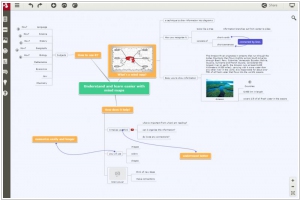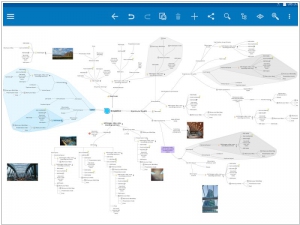Mindomo vs SimpleMind
March 10, 2025 | Author: Adam Levine
4★
From all the mind mapping software apps out there, Mindomo is the most focused on providing the best solution for teachers and students. Collaborative mind mapping, concept mapping, outlining - the best way to understand and learn anything.
9★
SimpleMind is the world leader in cross platform Mind Mapping tools. Analyze your thoughts and structure them with SimpleMind. The unique free lay-out allows you to organize your ideas exactly how you want it.
Mindomo and SimpleMind are both mind mapping tools, which means they exist to help humans do what they already do naturally—make chaotic mental connections and then attempt to make sense of them later. Both let you throw ideas onto a digital canvas, link them together in meaningful (or entirely meaningless) ways and sync them across devices so you can ponder your genius at home, at work or while waiting in line for coffee. They also allow you to add images, notes and links, which is useful if you like your thoughts to come with footnotes. Most importantly, they exist on Windows, macOS, iOS and Android, because a thought that exists only in one place is a thought that is bound to be lost forever.
Mindomo, born in Romania in 2007, takes its mind-mapping duties very seriously. It insists that your ideas should not only exist but should also be managed—preferably with tasks, deadlines and a Gantt chart ominously tracking your progress. This makes it particularly appealing for business users and educators, who need to organize not just thoughts but other people’s thoughts as well. It also believes that being offline is no excuse for being unproductive, so it offers a desktop version that does everything short of brewing coffee. As a final flourish, it speaks fluent Import/Export, allowing your mind maps to fraternize with other formats like MindManager and XMind.
SimpleMind, on the other hand, emerged in the Netherlands in 2011 with a much more relaxed approach. It believes mind maps should be freeform, flexible, and, above all, not stressful. No task management, no Gantt charts, just the pure joy of connecting thoughts in a visually pleasing way. It keeps its interface minimalist, which is great if you like your software to get out of the way while you think. Unlike Mindomo, it doesn’t particularly care if your mind maps play nicely with other software—it’s more about the process than the final product. Which, depending on your approach to productivity, is either incredibly liberating or just a fancy way of saying "figure it out yourself."
See also: Top 10 Mind Mapping software
Mindomo, born in Romania in 2007, takes its mind-mapping duties very seriously. It insists that your ideas should not only exist but should also be managed—preferably with tasks, deadlines and a Gantt chart ominously tracking your progress. This makes it particularly appealing for business users and educators, who need to organize not just thoughts but other people’s thoughts as well. It also believes that being offline is no excuse for being unproductive, so it offers a desktop version that does everything short of brewing coffee. As a final flourish, it speaks fluent Import/Export, allowing your mind maps to fraternize with other formats like MindManager and XMind.
SimpleMind, on the other hand, emerged in the Netherlands in 2011 with a much more relaxed approach. It believes mind maps should be freeform, flexible, and, above all, not stressful. No task management, no Gantt charts, just the pure joy of connecting thoughts in a visually pleasing way. It keeps its interface minimalist, which is great if you like your software to get out of the way while you think. Unlike Mindomo, it doesn’t particularly care if your mind maps play nicely with other software—it’s more about the process than the final product. Which, depending on your approach to productivity, is either incredibly liberating or just a fancy way of saying "figure it out yourself."
See also: Top 10 Mind Mapping software





